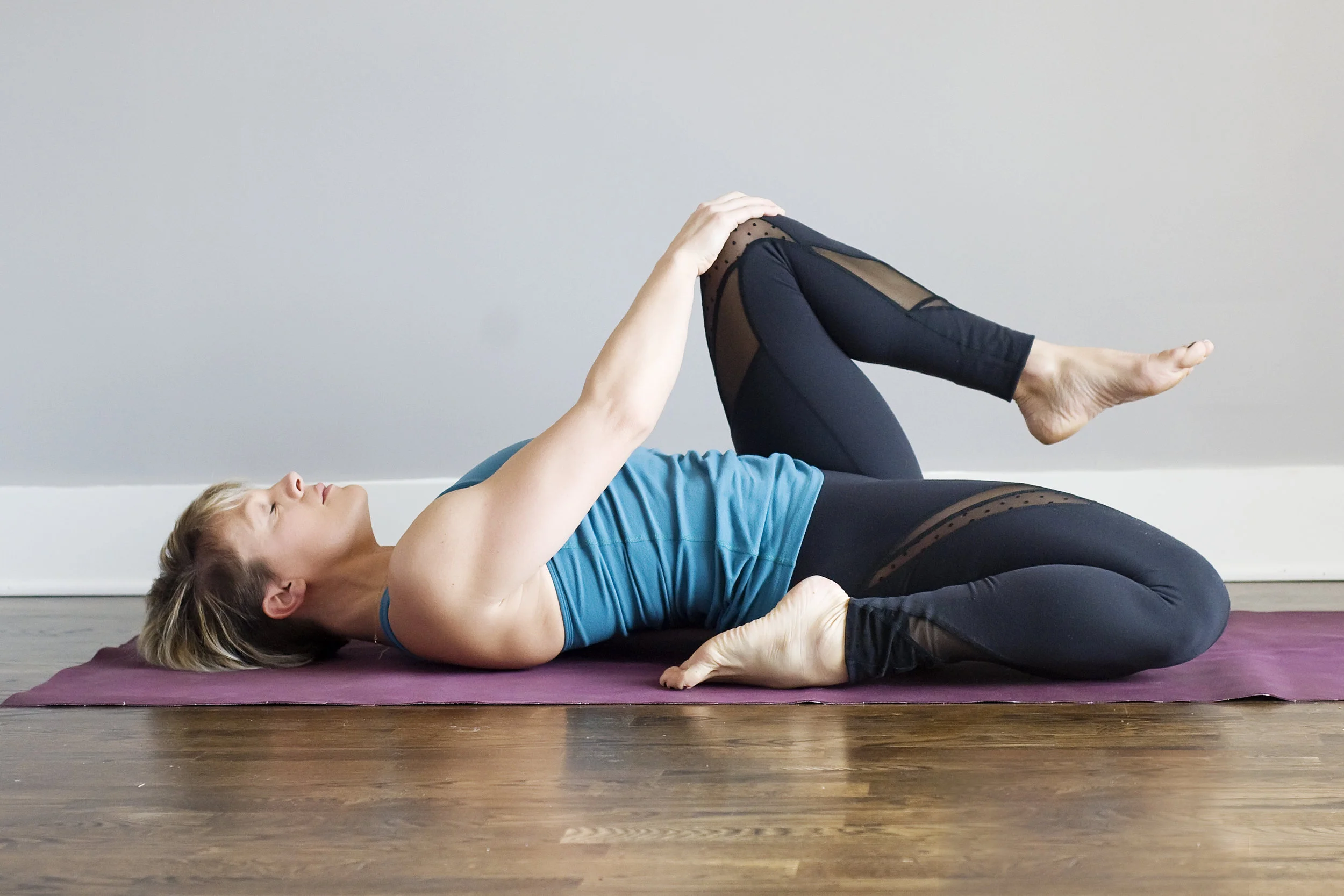If you are struggling to fall asleep easily or to stay asleep, you are not alone. An estimated 164 million Americans also struggle.
While reasons for this restlessness can vary — anywhere from physical aches and pains, to stress and/or hormones — it is an overall and general dis-ease in the body that keeps you from getting the shut eye that you need. Research shows that the average person struggles to function on less than 7 hours.
Reducing stress, calming the body and the brain, can help you fall asleep and stay asleep through night. Here are several yoga asanas and other suggestions that might help you get the beauty sleep you deserve. And if you do wake, you can use these tips to help you fall back to sleep.
1. Focused breathing techniques
In a comfortable seated position, allow yourself to close your eyes and watch your breath. Identify the place in your body where you feel your breath the most. Perhaps you feel it best in the stomach, along the ribs, or maybe in the chest. Maybe you feel it in the throat or in the nostrils. Wherever you experience your breath, watch it and bring awareness to it. Set a timer and do this for about 2 minutes (and then using in with the remaining poses), noticing when your mind wanders and gently bringing it back to your breath each time.
Why? Meditation induces a relaxation response in the body, helping to lower your heart rate, respiratory rate, blood pressure and increasing alpha brain waves.
2. Figure 4 Pose
On your back, place your right ankle on your left knee. Wrap your hands around your left shin or thigh and pull that leg back towards your chest. Hold for 2-3 minutes and then switch sides.
Why? This is a great hip opener that also releases the low back after a long day in repetitive positions.
3. Resting Jackknife
On your back, plant your feet and bend your knees. Lift your hips and place a block under your sacrum (adjust the height to your comfort). Make sure that the block isn’t touching your spine. Lift you knees over you hips, but maintain the natural curve of your lower back and some tone to your belly. Slowly, draw a knee towards your chest, maintaining this position in your spine, while extending the opposite leg and resting it down to the ground. You may have to bend your knee to make this happen. Hold for 2-3 minutes and then switch to the other side.
Why? This is a great way to release the hip flexors. If you sit or drive most of the day, these muscles tend to shorten. Releasing them can help ease low back pain and help you sleep easier at night.
4. Sphinx
On your belly, draw your elbows under your shoulders and prop your body up. Relax your shoulders, buttocks and back. Let everything drape to the floor.
Why? Again most of us sit all day at our jobs, this pose can help open the front line of the body and also gently stimulate the adrenals, part of our endocrine system responsible for delivery of stress hormones, as well as assisting our immune system.
5. Myofascial Release
After a long day in a consistent posture, can be exhausting and dehydrating to our tissues. Using a myofascial release therapy ball roll out your low back and gluteal muscles. Start on the right side of the gluteals, working an inch from the sacrum around just below the hips to the outside edge. You can also work above the hips, from just outside the spine out towards the love handles.
Stay off bone and just move on soft tissue! Be sure you are able to comfortably maintain your deep focused breath.
Why? Rolling and compression with a therapy ball can help rehydrating the tissues, helping them reorganize and release. Bound fascia, adhesions and scar tissue can create muscular tension and referral pain. Releasing it can feel liberating!
6. Legs Up the Wall
Sitting with your left hip close to a wall or headboard, swing your legs up the wall as you lay back on the floor or bed. Hold this pose for 3-10 minutes. Allow yourself to focus on your breath once again.
Why? This is a wonderfully gentle inversion that stimulates venous return to the heart, nourishing the body on a cellular level. Think of it as reversing the affects of gravity on the body.
7. Progressive Body Scan
Lay on your back. Systematically and silently list each body part starting with your right toes (ie. right big toe, right second toe, right third toe) without moving that body part.
Continue up through the right leg, the left leg, the front body, to the shoulders, then the right fingers up the arm, the left fingers and arm, the back body, the neck, the head, and the face.
Why? Another technique that helps induce the relaxation response.
Try these before bed at night. If you wake in the middle of the night, you can use these same practices to help. However, you might want to leave the bed to practice and try to make your goal relaxation rather than pressing yourself to fall back to sleep.
